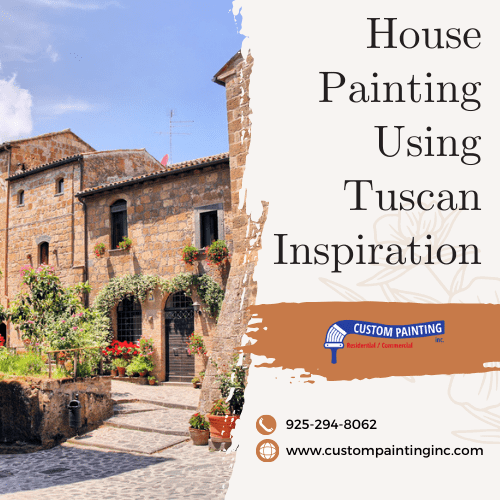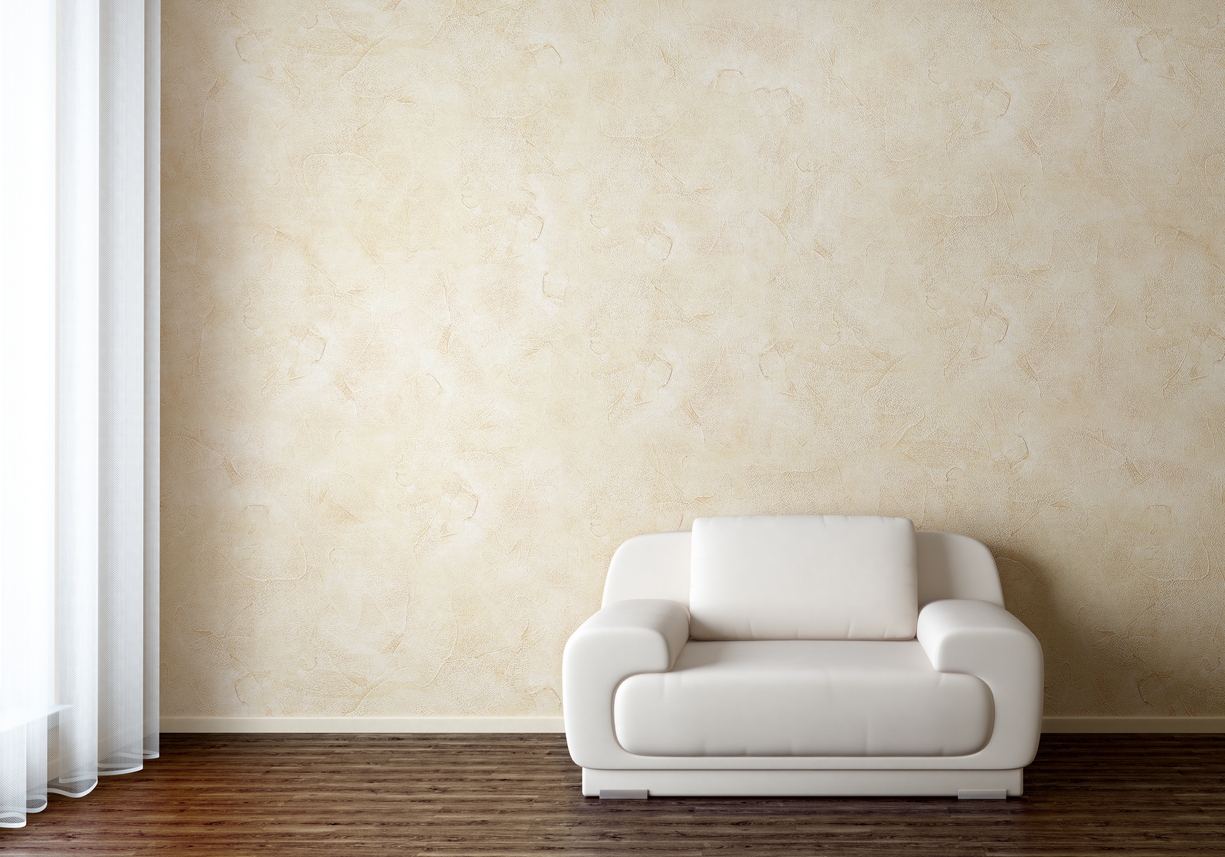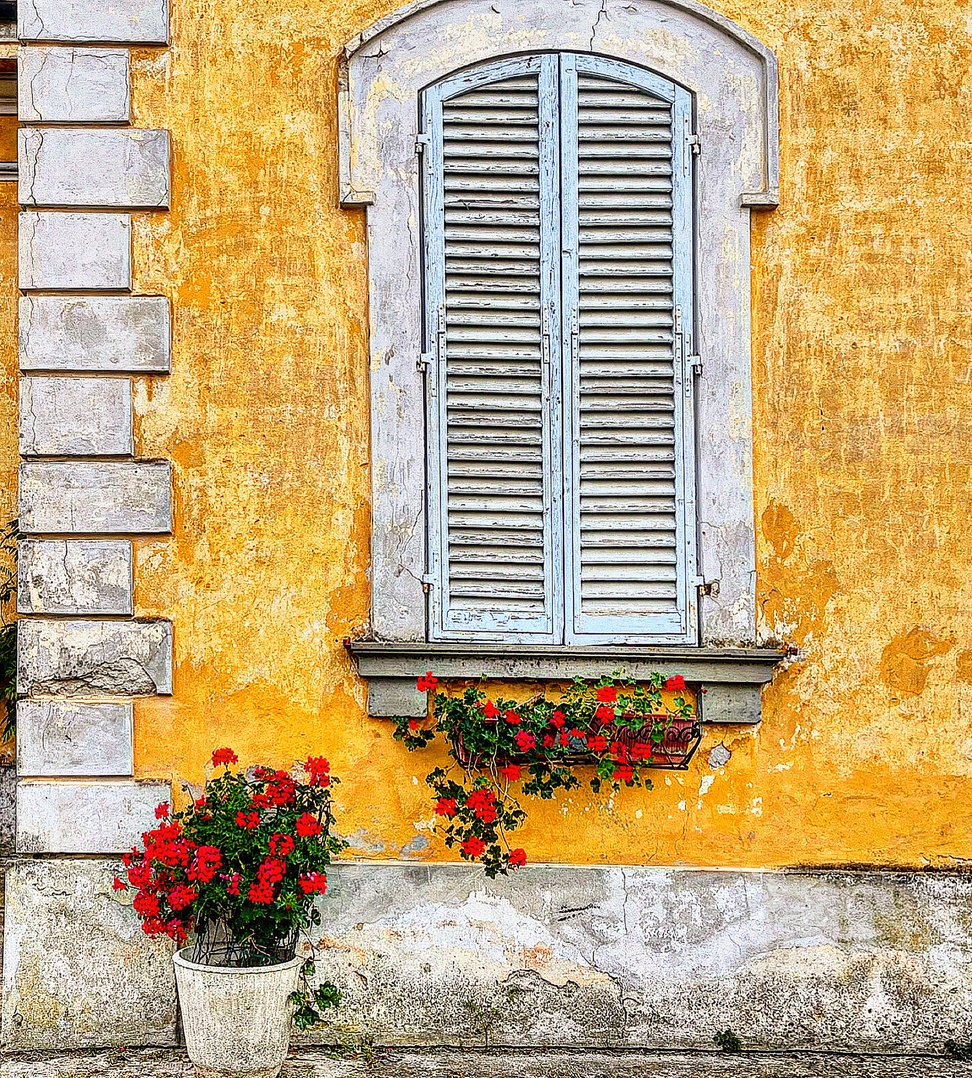The Tuscan style has become a favorite among Bay Area homeowners, celebrated for its aged, sun-burnt, and weathered appearance that creates a warm and welcoming ambiance. Personalize your space with unique accents and murals from our decorative painting service.
This style incorporates a variety of materials like leather, terra cotta, tile, marble, wrought iron, wood, and copper. Colors such as rust red, warm dark brown, burnt orange, olive green, sunshine yellow, and deep Mediterranean blue are hallmarks of this aesthetic. The Tuscan look is versatile, effortlessly switching between charmingly rustic and elegantly refined, and it’s incredibly easy to achieve with elements available in home improvement stores across the United States.
If you want to emulate the Tuscan style for painting your home, here are some tips to help you:
Choose Tuscan Colors
First of all, to achieve the Tuscan look, you have to choose the right colors. Focus on earthy tones like ochre, terracotta, and warm neutrals as your base colors. These hues evoke the sun-drenched landscapes of Tuscany and set the stage for a cozy, inviting atmosphere. Accent colors, such as deep reds, olive greens, and cobalt blues, add depth and interest, creating a balanced and visually appealing palette.
Prepare the Walls
Before you start painting, it’s essential to prepare your walls properly. As with painting any kind of wall, preparation ensures that the paint adheres well and lasts longer. Begin by cleaning the surfaces thoroughly. Dust, dirt, and grease can prevent the paint from sticking, so use a mild detergent and water to clean the walls, then let them dry completely.
Next, you’ll want to prime the surfaces. Priming helps to seal the wall, providing a smooth and uniform base for your paint. It also covers any existing stains or dark colors, making it easier for your new paint to stand out. Choose a high-quality primer that suits your wall type—whether it’s drywall, wood, or plaster.
Once your walls are clean and primed, start off with a neutral base coat. Off-white, basic eggshell, beige, or very light brown works best for a Tuscan look. Then, allow it to dry for at least 24 hours before moving on to the next step, whether you prefer more coats of paint or texture.
Add Texture
The Tuscan look does not consist of a flat, smooth wall – you must put some texture on it. Texture is a key element of the Tuscan style, adding depth and character to your walls. Here are a few techniques to achieve that perfect texture:
- Stucco or Faux Finishes: These techniques mimic the look of traditional Tuscan walls. You can use pre-mixed stucco compounds or create a faux finish by mixing a little base color with a joint compound until it looks like a thick cake batter. If you choose to go with the latter, use a regular or comb-edge spreader. Then, start adding the mixture to the walls. You don’t want an even coat – make it thicker in some places on the wall and thinner in others so it creates the uneven, weathered look of the Tuscan style.
- Use Sponges, Brushes, and Rollers: For a more subtle texture, try using sponges, brushes, or rollers. A sea sponge can create a soft, dappled effect, while a brush or roller can add linear or stippled textures. Experiment with different tools to find the look you like best.
- Apply Venetian Plaster: Venetian plaster is a classic choice for a luxurious, polished look. To do this, apply multiple thin layers of plaster with a trowel, then burnish the surface to a smooth, glossy finish. It takes some practice, but the results are stunning and authentic.
Add Decorative Details
Adding decorative details is where you can really make your Tuscan-inspired space unique and personal. Here are some ideas to get you started:
- Incorporating Stencils and Murals: Stencils and murals are fantastic for adding intricate designs and scenes that capture the essence of Tuscany. You can use stencils to create repetitive patterns or borders, adding a touch of elegance to your walls. Murals, on the other hand, can depict scenes of the Tuscan countryside, vineyards, or architectural elements. When done right, it can really make your space feel like a slice of Italy.
- Add Distressed Finishes for an Aged Look: To achieve that authentic, aged appearance, consider using distressed finishes. This technique involves gently sanding certain areas of your painted walls or furniture to reveal the layers underneath, giving them a worn, lived-in look. You can also use glaze or crackle mediums to create the effect of old, weathered paint.
- Use Metallic Accents: Metallic accents can add a touch of luxury and shine to your Tuscan decor. Consider using gold, bronze, or copper tones for picture frames, light fixtures, or furniture details. These metallic elements can enhance the warmth of your earthy color palette and add a bit of sparkle to your space.
Add More Depth
If you prefer to have more depth than decorative elements, try using two accent colors. Start with a light color like yellow. Mix it with water to make it runny. Use a 2.5-inch brush to dab the mixture on the wall, letting it drip to create uneven lines. Blend these drips with a wet sponge to add the base color.
For the second accent, use a cool, dark color like olive green, thinned with water. Use a flat-edged brush to paint diagonal lines and soften them with a clean rag. Repeat with a warm, dark color, like a brick red. This layering creates an aged, weathered look.
If some areas are too dark, lighten them with a bit of the light accent mixture. Add more accents where needed to balance the look.
Once all the details have dried for at least 24 hours, seal the walls with two coats of sealer for protection and to keep them looking great.
Seal and Finish
Once you’ve painted and added your decorative details, it’s important to seal your painted surfaces to protect them from dirt, moisture, and wear. This is especially important for textured walls and surfaces with decorative details, as these can be more susceptible to damage.
Here are your options for finishing:
- Matte Finish: Offers a soft, elegant look and hides imperfections well, but it’s less durable than other finishes.
- Satin Finish: Provides a slight sheen, adding a bit of polish while being durable enough for high-traffic areas.
- Glossy Finish: It provides a shiny, reflective surface that makes colors pop and is easy to clean, but it can highlight imperfections.
Conclusion
Creating a Tuscan-inspired space begins with proper wall preparation, including cleaning, priming, and choosing a suitable base coat. Then, you can choose to add texture, such as stucco or Venetian plaster, to bring depth and character. To personalize the space, you can also opt for decorative details like stencils, murals, and metallic accents. Then, top it off by sealing and finishing your work to protect and enhance its appearance.
While creating a Tuscan look for your walls can be achievable, if you’re not confident doing it yourself, it’s better to ask for a professional’s help. Our experts at Custom Painting, Inc. are here to help you achieve the perfect Tuscan-inspired look for your home. No more hassle and guesswork for you!
Feel free to reach out and call us at 925-294-8062 or fill out our contact form for any questions or to schedule a consultation! Serving the Bay area including the cities of Moraga, Mountain View, Orinda, Pleasant Hill and San Jose.



